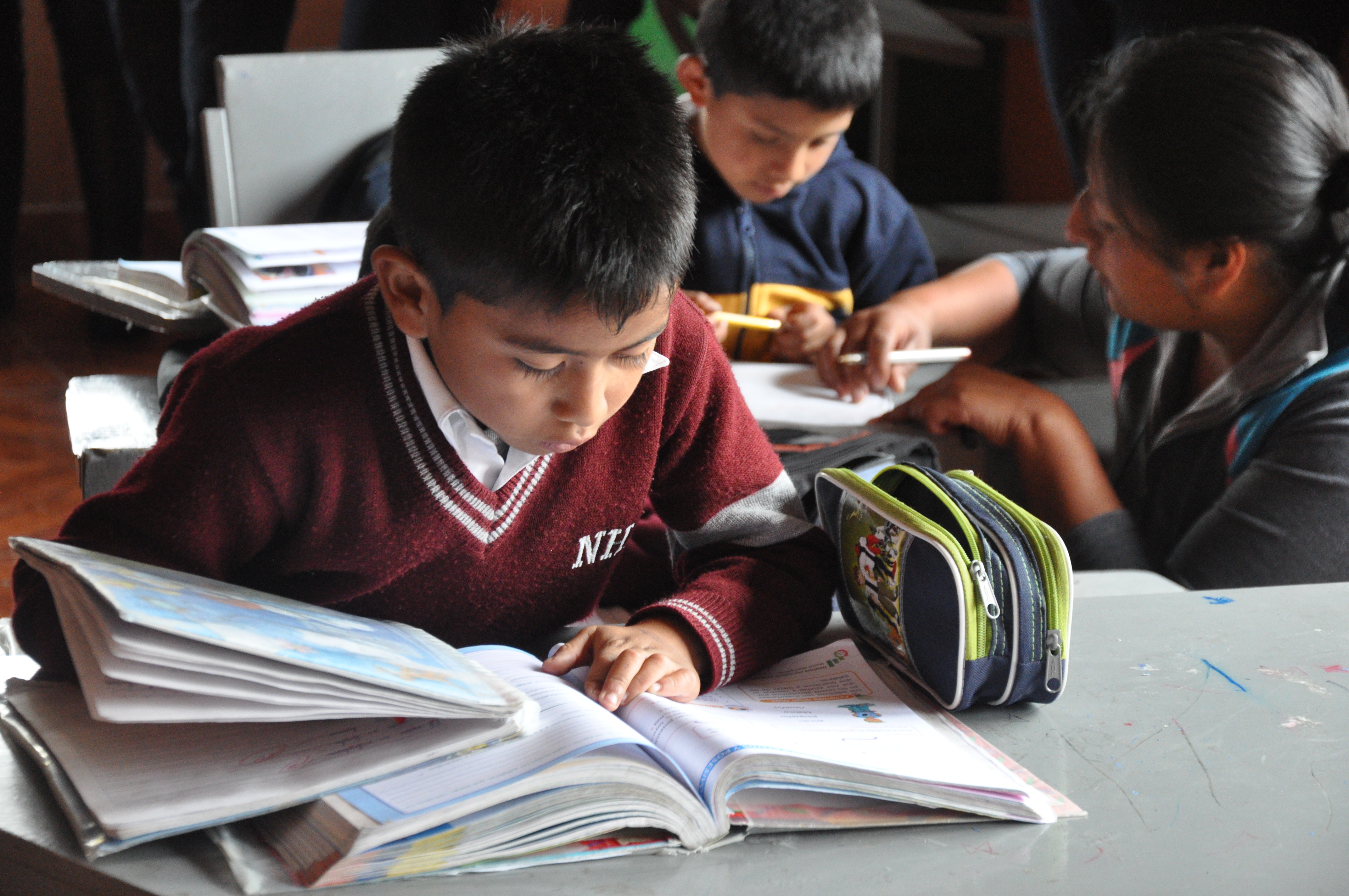A 7th grader at Escuela y Colegio Nuevos Horizontes del Sur in Quito, Ecuador, Alexis Dutasaca plays soccer with his classmates every day at recess. It's one time during the day when the students can be carefree, unburdened by thoughts about the lack of resources that challenges them every day.
In class, his hand shoots up whenever the teacher asks a question, and the other students clearly look to him as an example.
The school understands circumstances that might force a student to act out during class or that might inhibit the learning environment, Alexis said. Escuela offers snacks to students who are not able to bring their own, creating a connected, family-oriented learning environment.
"They teach me good things here," Alexis said. "So I do everything they say."
He is just one of many Ecuadorian students who view school as a ticket out of a life of poverty that could otherwise seem inevitable. Educators, parents and students find community in one another, demonstrating the values of the Ecuadorian society that focuses on interdependence among all members and tries to ensure the success of every child, regardless of socioeconomic background.
"We may not have a lot, and we may be a very humble school, but we have a lot of love for our students," said Luis Taco, who teaches the 4th, 5th, and 6th grades. "That is what I really like the most. I just hope that our students will have enough knowledge to understand and appreciate what we do for them."
The government mandates that all children between the ages of 5 and 14 must go to school. This could mean a school in the middle of downtown Quito with hallways and actual bathroom facilities. But for students like Alexis, this means a simple cement building in the mountains, about 45 minutes outside of the city center.
Although the 68 students at Escuela, a private school, pay about $15 per month in tuition, the wealth gap among public schools, rural schools and urban private schools is vast.
"The one thing we could really use here would be more teachers," Taco said. "Every time it is harder to find people like us who will do this work for a very tiny amount of money. We are also doing a lot of social work when we are teaching, which makes it even harder."
Expanding access to educational opportunity is a major initiative in Ecuador's relatively new constitution, drafted in 2008, and the government has undertaken many initiatives to increase learning for students all over the country. But for the students and families at Escuela, it's not the politics or the need to achieve a certain power status that drives the will to learn. It's the community that raised them: sisters, brothers, neighbors and teachers.
It is this idea that inspires Alexis's desire to give back to the community that raised him by becoming a fireman when he grows up.
"We have a program here at school, and they teach us how to evacuate the classroom," he said. "That will teach me how to be a good fireman."
As an older student, Alexis is a role model to other kids in the lower grades at Escuela. He shows them how to act in an education setting and how education could help them in the future. His leadership role at school is further reinforced by the fact that Escuela's principal, Manuel Dutasaca, is his grandfather. Manuel's daughters are teachers at the school as well, and a few other grandchildren round out this communal, familial operation.
Dutasaca founded Escuela in 1990, beginning with 29 students.
"The Ecuadorian government didn't have enough schools for kids," he said. "That's why we opened it. But we kept getting more and more students."
Dutasaca said that despite growth in numbers of students, the government didn't give the school enough resources, forcing the school to accept fewer and fewer students.
However, what they have, they share with students, Dutasaca said. From snacks to personal time, Dutasaca, as well as the other educators, give all they can. The principal works from 7 a.m. to 6 p.m. every weekday.
"What we teach here is to educate the mind," Dutasaca said. "Like Oscar Arias said, 'Life won't kill you. Guns won't kill you. But what kills you is the mind.' So what we try to do is teach our students that they can't have anything bad in their hearts. They can only have good in their hearts. Because once you build a person, everything else will be built."













